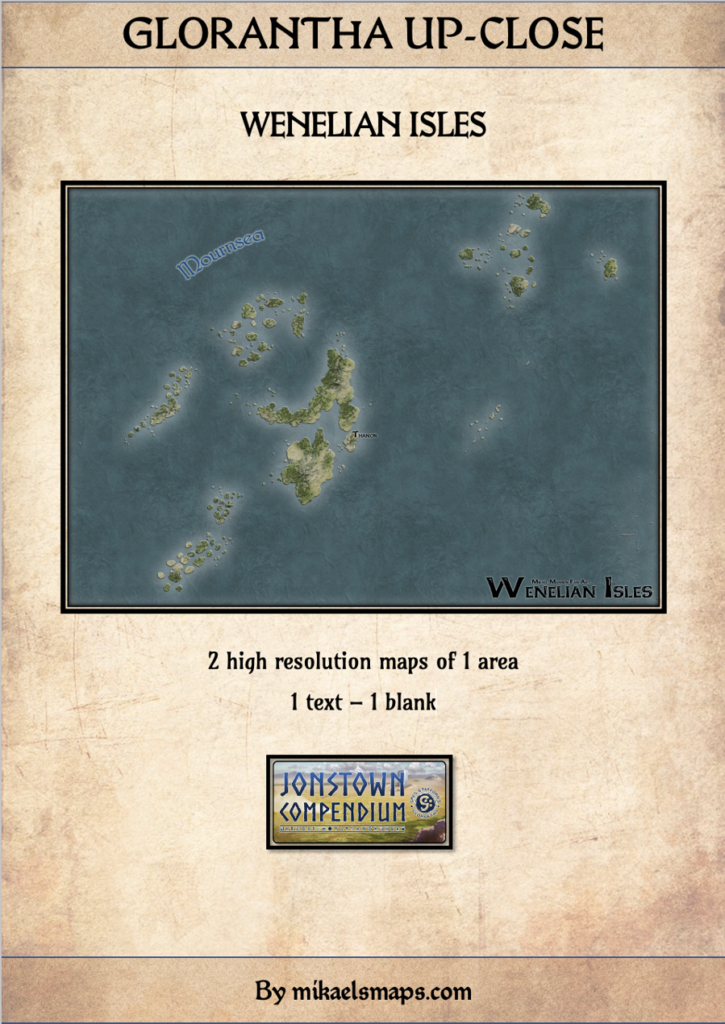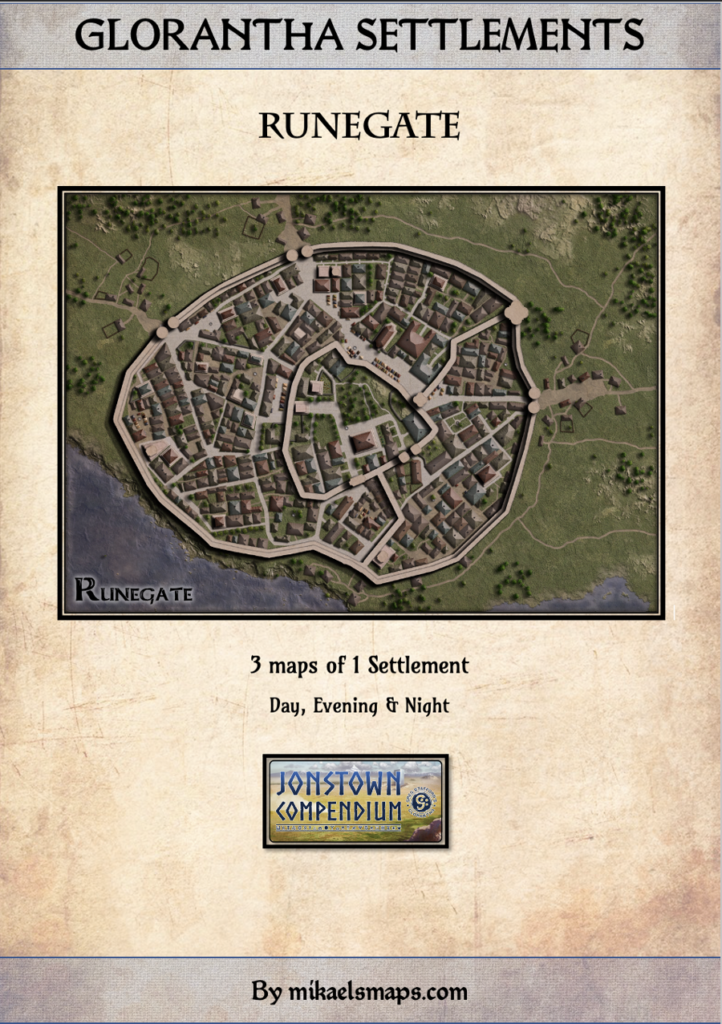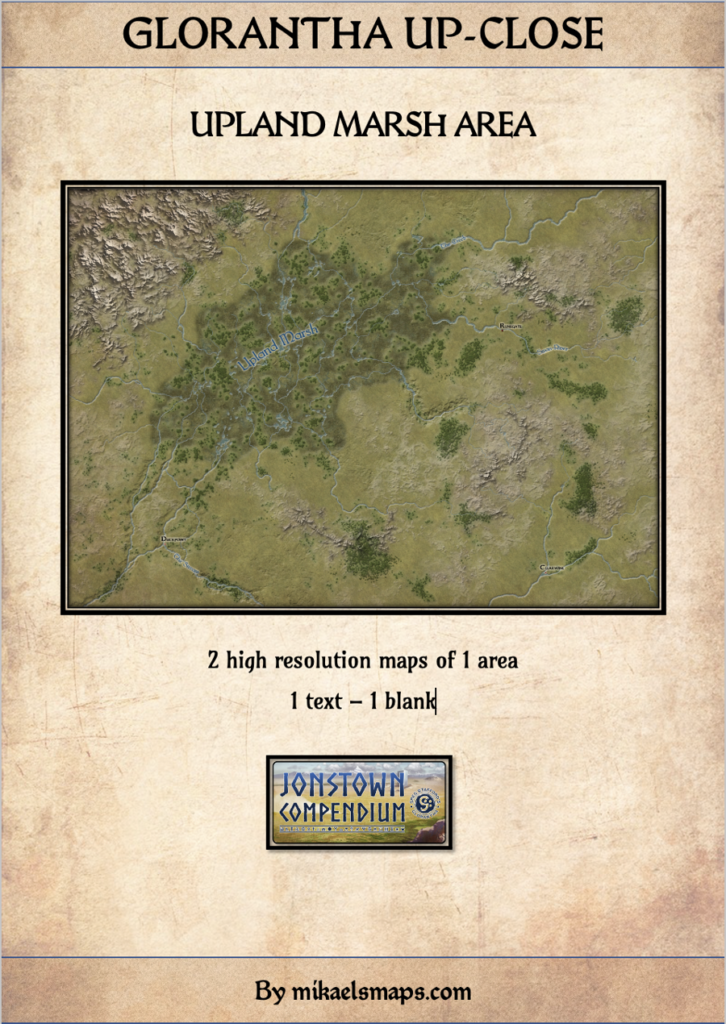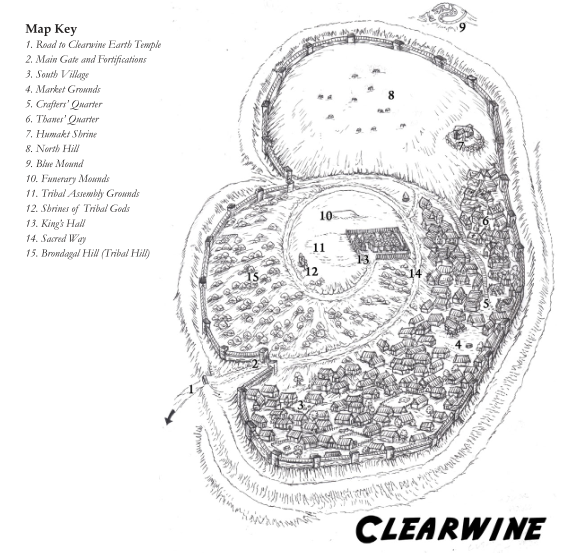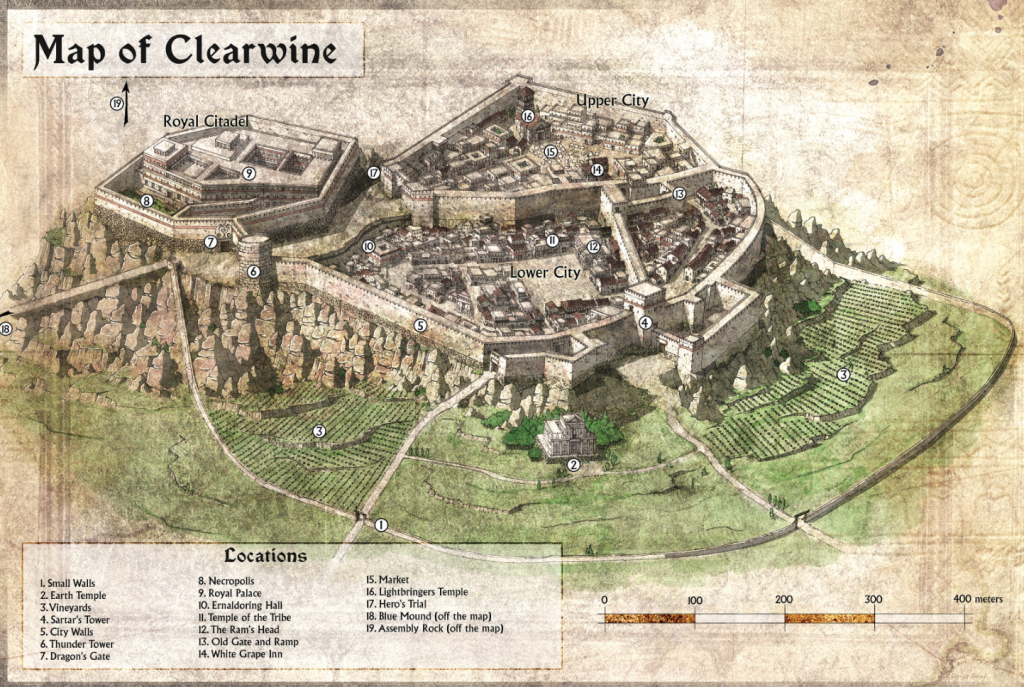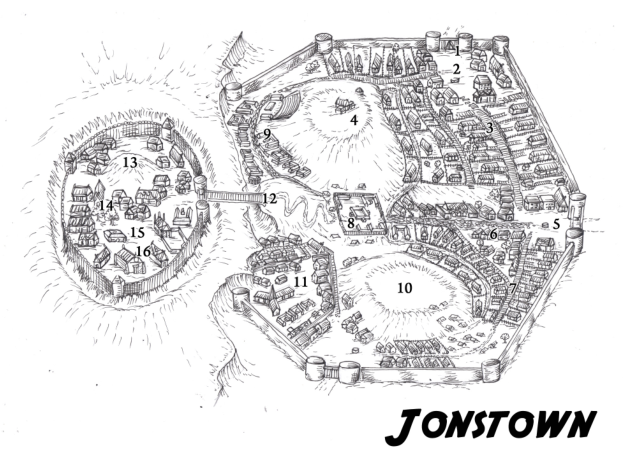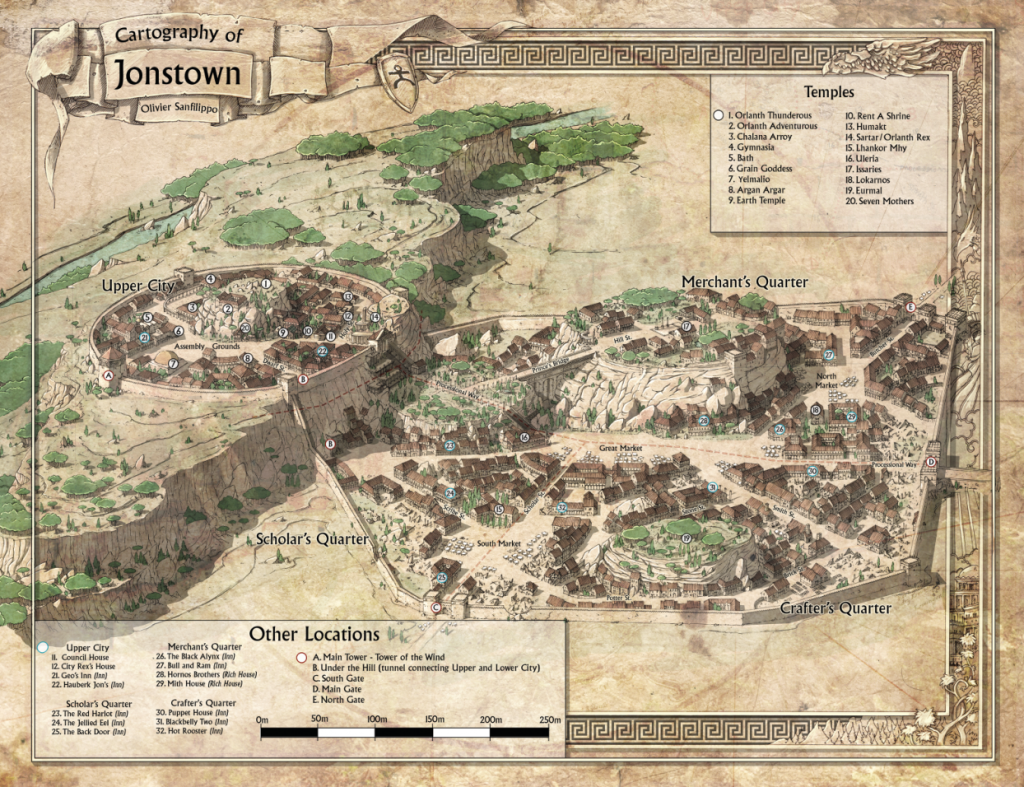Welcome to a new issue of the Journal of Runic Studies, the premier Malkioni publication for studies into the nature of Glorantha. If you haven’t subscribed yet, please consult with the spirit bound to the appropriate electronic page.
Chaosium News

Here are this week’s Chaosium news!
The White Bull S03E04
The third season continues, and I’m still late for watching it! Aaargh!
The Glass Cannon Demo’ing Chaosium Games
Brian Holland runs the Glass Cannon people through no less than three Chaosium games: Call of Cthulhu, RuneQuest, and 7th Sea! These demos were part of a series of sponsored events at GenCon 2022. Obviously, each one of the three scenarios are super short.
Jonstown Compendium

The Jonstown Compendium is Chaosium’s community content program for all Gloranthan games, hosted on DriveThruRPG. Disclaimer: all the relevant links are affiliate links that hopefully will let us cover some of the hosting and maintenance costs for the website and podcast! Thanks for using them!
The Sunken Dead
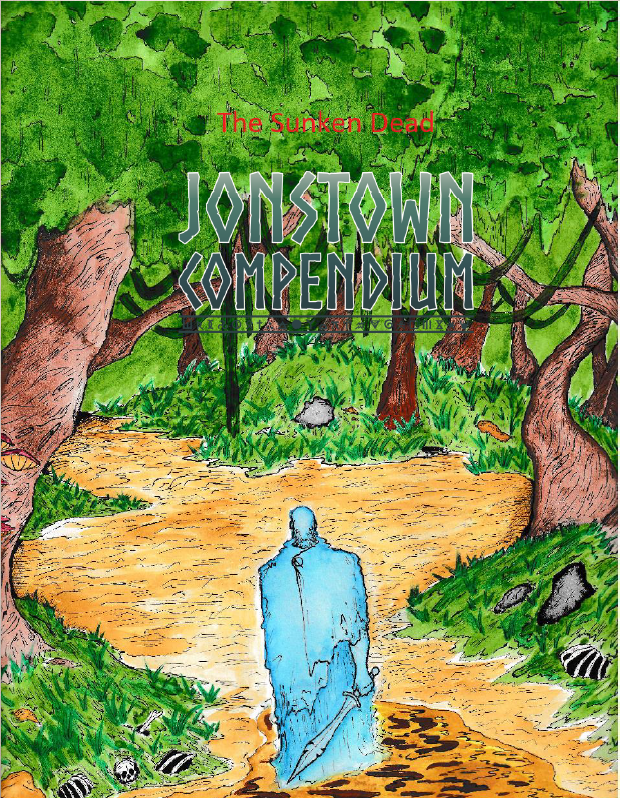
This short adventure by Peter Harroun introduces new adventurers and players to the venerable tradition of cattle raiding in Sartar, although things might not go as planned.
Glorantha Up-Close, Gloranthan Settlements
Mikael Mansen has released three maps: the Upland Marsh, Runegate, and the Wenelian Isles.
Jeff’s Notes

Jeff Richard, the current mastermind on everything Gloranthan at Chaosium, is often posting notes and thoughts on the RuneQuest Facebook group. Here’s our curated list from the past week. A partial archive of these sources is compiled on the Well of Daliath.
Catalogue of the Gods
Jeff talks about the slow process of cataloguing the gods… not for the upcoming Cults of Glorantha books, mind you (although that’s probably applicable!) but for the intellectuals of the First and Second Age. Here’s the main bit:
The God Learners theorized there were approximately two hundred deities of world-wide significance. Not all of these deities had cults. […] Even the enemies of the God Learners accepted this structure, although they largely accepted those limitations imposed by the Great Mystery itself.
The Lhankor Mhy cult enthusiastically embraced the Mythical Synthesis Movement, and their Knowing Priests played a key role in the later God Learner movements. In the Third Age, Lunar philosophers have added another dozen or so deities (most importantly the Red Goddess and the Seven Mothers), but they too largely adopted the conclusions of the Mythical Synthesis Movement.
So as I understand it, the Theyalans and Dara Happans spread across large parts of Genertela in the First Age and told everyone that their local gods of this and that were just particular aspects of bigger deities some of their big heroes still remembered from before the Dawn. So these previously isolated cults change the name of their deities, add a moustache here and a snake there, and boom, they’re joining a growing set of standardized religions. But were the Theyalans and Dara Happan proselytizers really “right”, or was this all just a scam lasting several centuries? Mmmmh…
[…] We tend to assume that gods are complete cultural constructs – but in Glorantha that is not true. The God Time is real and tangible – our understanding of the gods is of course viewed through the lens of culture (but of course our interaction with the gods also changes and affects our culture), but the Gloranthan gods exist outside of us mortals.
Sure, in theory, Gloranthan deities “actually exist out there”. So Orlanth and Ernalda are not some of the biggest gods in Genertela because they have the biggest number of worshippers, but rather it’s the opposite: there are more people worshipping them because they are some of the most powerful gods.
Still, I can’t help but think there is a troubling parallel between how many places the Theyalans and Dara Happans managed to get to after the Dawn, and where we find worship of the most syncretic cults. Later when the God Learners reached a bunch of islands and distant places, they didn’t figure out that this or that local god was actually part of the monomyth, did they? The East Isles still have “thousands” of deities, for instance. You might explain this by saying that these cultures clung onto their deities from the God Time in their little shard of Spike-exploded-land, but I’m sticking to my theory of the snake oil Theyalan sellers, thank you very much.
Current Tarsh Politics
This note looks over the last few generations of the Blacktooth family. For instance, there’s a bit more information about Vostor Blacktooth, who is Fazzur Wideread’s father, and all of his sons:
Vostor had four sons and one daughter by two wives. They were all loyal and brave. The brothers all became Lunar soldiers who fought often for their king. The eldest son, Farrad, died at age 28 in the Battle of Grizzley Peak (1582) which smashed the Sartar army. The second son, Goslem, died at age 23 in the Battle of Bagnot (also 1582), when he acted rashly and attacked too soon. The third son was Wassail. He was quick to rise in the priesthood and helped Phargentes arrange the difficult magic which helped kill Sartar prince Terasarin in 1600. Fazzur was the youngest son, born in 1564. He was a gifted child and a talented soldier, receiving his commission early. Vostor’s last child, a daughter, was born in 1568 and was named Harsta. She was a proud and haughty noblewoman, and wed the son of King Phargentes – Moirades.
Joerg tells me that Jeff made a few typos in here — Wassail most probably helped King Moirades of Tarsh kill Terasarin with Lunar magic, not King Phargentes (Phargentes had died two decades prior to this).
The note continues with a fairly detailed list of Fazzur Wideread’s military accomplishments, although once again Joerg notes that Fazzur did not petition his brother-in-law in 1613, because that brother-in-law, King Moirades, died 3 years prior. The new king would have been at that point his nephew, King Pharandros, son of Moirades.
The whole saga of Tarsh, from its founding to its current status as a Lunar Province, has always been interesting to me. Plus, there’s this:
For three generations, the Eel-Illaro dynasty was so closely tied with the Blacktooth (Orindori) family, that the whole thing can be seen as a family soap opera.
Noble Patronage in Tarsh & Sartar
This an interesting note. We already know that Tarshite Kings and Sartarite Princes were almost always patrons of the arts and letters. They would build Knowledge Temples and encourage vibrant art scenes just as much as they would build trade roads and armies:
In short, a noble in Dragon Pass is expected to be not only a warrior and a priest, but also literate and cultured.
But Jeff also gives us a list of Gloranthan “classics” that nobles and scribes would be familiar with: “Songs of the House of Sartar“, “Pilgrimage and Commentary“, “Saga of the New Good Land“, and “The Roads and Graves of the Makers“. In the now Lunarized Kingdom of Tarsh, there would also be “The Lives of Our Red Goddess” and “The Redline History of the Lunar Empire“. All of them get a paragraph of description, and some might sound familiar to those who skimmed through King of Sartar and the Glorantha Sourcebook.
This feeds back into the evolution of Glorantha’s world-building over the past few decades:
So unlike the presentation of the Orlanthi in some of the Issaries material (in particular Thunder Rebels) where they appeared to be completely unknowledgeable about the next valley, let alone other lands and history, the ruling class in Sartar no doubt has at least a passing familiarity with the classics. Nobles likely pay scribes to teach their children how to read and write.
When the young adults are sent out of their home to undertake cult training, they often are given poetry to memorize and recite. They also learn to fight and are are taught dances and other useful things.
Indeed, between Thunder Rebels and the rest of the HeroWars/HeroQuest line, plus the King of Dragon Pass game, I can totally see how people would think of the Sartarites that way. I think it may be true of some people from some of the tribes, but the HeroQuest version of Glorantha was most crucially missing a civilized and cosmopolitan depiction of Sartarite cities. Even just taking into account the art direction, look at this comparison between Clearwine in HeroQuest and Clearwine in the more recent RuneQuest:
And the same comparison for Jonstown:
A picture is worth a thousand words, so art direction and budget is everything. It’s great to see Chaosium putting a lot of effort in that, even though arguably that only gets you so far if the players have no visual references for the antiquity. This is probably why Jeff also keeps trying everyone to watch shows like Rome.
Anyway, you can read the rest of the note for other interesting bits of information such as the difference in culture between Furthest, Alkoth, and Mirin’s Cross, or how educated Argrath is.
Harmast’s Saga
Now this is a bit cruel. Jeff shows off Greg Stafford’s Harmast Saga:

Why am I saying it’s cruel? Well because it’s practically impossible to find, yet Jeff describes it as:
Pilgrimage and Commentary: This is the most current version of the most influential text of the Orlanthi and a foundational text for Orlanthi literature (and influential far beyond).
The issue of course is that Greg’s unfinished works have a complicated history. Some of them have been published and are easily available in PDF and POD, but others were collector items sold at premium prices to hard-core fans in the 1990s (like, say, the Roots of Glorantha series). As far as I understand, this was back when Greg was in financial trouble, and some people recommended this as a way to stay afloat. Almost all of these books have nuggets of Gloranthan lore, but they aren’t meant to be taken at face value: those are almost literally Greg’s scribbles taken from his notebook. Or word editor. Basically, not much of it is necessarily “canon”.
Nonetheless, there’s a lot of people (myself included) who would like to peek inside these books. I understand that Chaosium doesn’t want to sell for $9.95 what was previously sold for $200, especially since Greg himself didn’t want to upset those who got them at those prices… but the issue of pricing and the issue of availability are two different issues. Selling these special items at $200 a piece is obviously for a very niche audience, but it’s possible. I think that the only obstacles to this are Chaosium having more important things to do, and Jeff not wanting to repeatedly say stuff like “no, what it says on page 23 of The Encyclopedia of Seshnela was just something Greg was thinking about, and he changed his mind 7 years later“. Either way, Jeff is very clear that these old books are not going to be published. Oh well.
Anyway, Jeff’s note goes over what you might find in the “in-world” version of this book… and maybe in the real-world version too! Who knows, except the lucky few who have it! My guess is that Jeff is playing with words to that effect, here. Anyway, this being a book about Harmast, there’s some early heroquesting discoveries, like:
Other commentaries explain some of the novel ideas which Harmast and his companions undertook at this time. Many of these practices, such as “dropping down” into the heroic landscape to travel overland became a well-known, though always risky, heroquesting practice.
The value of this text was tremendous, since Harmast was the first person to re-enact the Lightbringer’s Quest in its entirety, and this narrative describes his journey. We only wish it was more complete.
There is also a second note here with more about Harmast’s Saga, including quotes, controversies about Harmast, and Harmast’s main two foes.
Glorantha Literature
Jeff continues writing about Gloranthan classics — that is, the literature classics that exist in the world of Glorantha.
Of course the Harmast’s Narrative is not the only classic work of literature in circulation. In Nochet, the Draconic Secrets, a Second Age manuscript from the Shadowlands, is widely known and read. Except for inconsistently referring to gods and goddesses as Kings and Queens, Sorcerers or Demons, it is a mishmash of the mythologies of the Only Old One’s many subject peoples.
Another foundational text of learning is the Stela Corpora, a long parchment of extensive Celestiology notes, whose information is most certainly of Dara Happan origin (possibly even the Glorious Reascent of Yelm).
And more, including a comment on the percentage of literacy in Glorantha.
Between this note and the previous ones, your sages and noble characters should have plenty of book titles to quote from!
The Battle of Queens
If you play in the new RuneQuest timeline, starting in 1625, and if you follow the usual Gloranthan meta-plot, you’ll soon end up mentioning, or even featuring, the Battle of Queens, which happens in 1626.
King Pharandros took command of the remaining imperial troops in the provinces, and led them with the Tarsh army to conquer the disheartened Sartarites. Near where the Creek enters the Upland Marsh, some 5,000 Lunar soldiers faced off against less than 4,000 Sartarites led by Kallyr Starbrow. The Sartarites held a good defensive position at the base of Old Top Hill.
Jeff’s latest note gives an overview of this battle, but if you want more details, including a preview of the “Dragon Pass Campaign” and its battle mechanics, there’s this old post from Jeff on BRP Central (scroll down a bit).
Community Roundup
The community roundup is our highlight of interesting things being mentioned in the Glorantha-related Facebook groups, sub-Reddits, and other similar online places.
Uz! Uz! Uz!
The Kraken videos keep pouring in. This new one has Sandy Petersen going deep about the Uz, which is a topic he is most qualified for: he literally (co-)wrote the book on it!
Bud on the Red Goddess
Bud’s RPG Review takes a look at the Red Goddess, the Seven Mothers, and the Lunar Empire in general. At less than 9 minutes long, this is probably the best, most concise crash course on the topic, from someone who knows his Gloranthan stuff!
Exploring Glorantha Visits Prax
You know the drill! JM and Evan are travelling through the plains of Prax while giving us some nice shout outs!
ENWorld Reviews Pirates of the East Isles
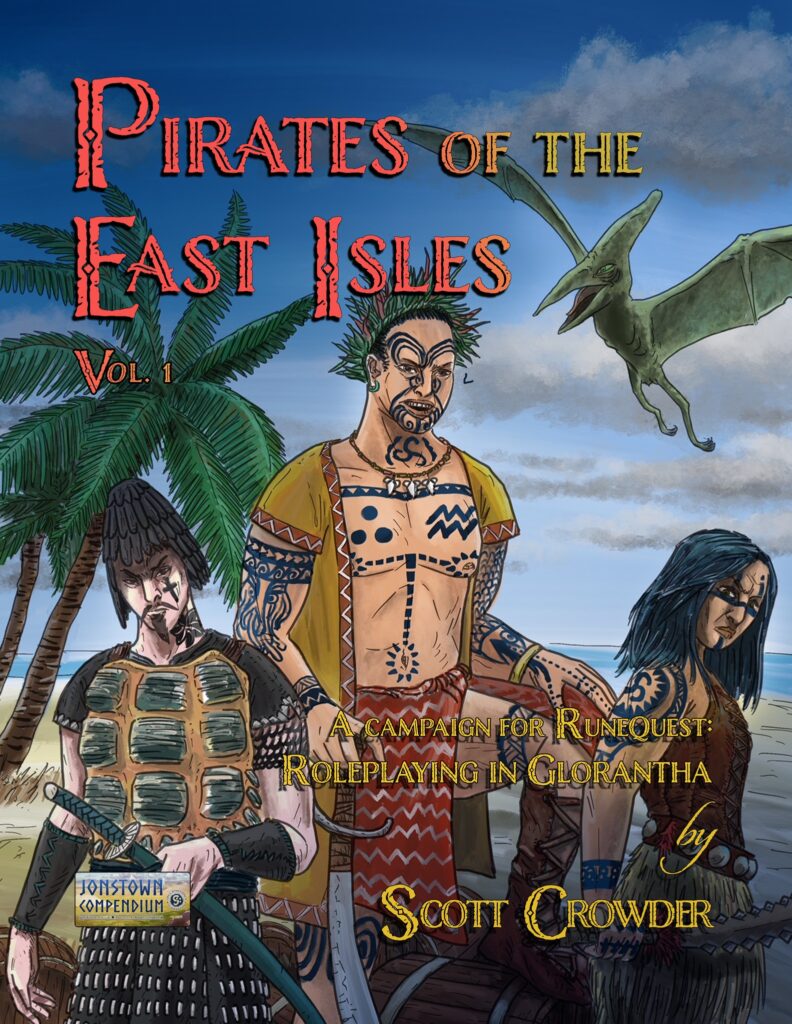
Well-known RPG news website ENWorld has a review of Pirates of the East Isles, by Scott Crowder!
This laser focused small scale is my favorite kind of supplement. A GM can pick this up and get going quickly without having to learn about the entire setting of Glorantha. PCs will have homelands, family history, rune affinities, cultural skill bonuses, occupations, cults, and family heirlooms tied directly to the islands.
Read more here, and don’t forget to pick up the PDF!
Andrew Logan Montgomery Reviews Duckpac
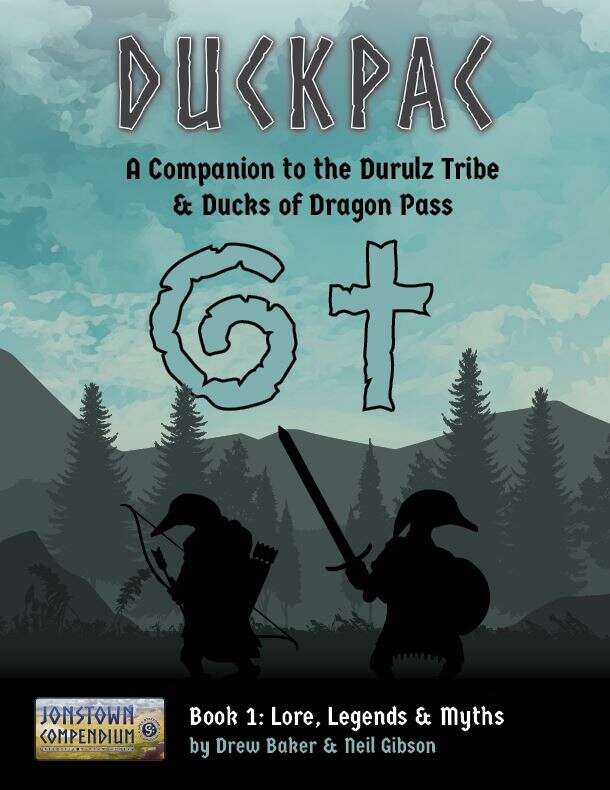
Andrew Logan Montgomery, author of some of the best sellers on the Jonstown Compendium, reviews Legion Games’ Duckpac series, which provide background info, character creation rules, and a solo adventure for duck adventurers (with some gamemaster scenarios to come).
I’ve been saying in several of these reviews that it is really getting harder to tell what is a Chaosium product and what is a Jonstown Compendium product these days. DuckPac exemplifies this.
High praise. And deserved praise. In case you’re still not sure:
While the Ducks have had a sourcebook before (Mongoose published a Duck book for their version of the game), this is the first time we have ever seen anything worthy of the classic TrollPak. DuckPac is brilliant, a cohesive, sensitive, and sometimes tongue-in-cheek examination of what arguably is Glorantha’s most iconic species. It’s a “must have.”
Read the whole review here.
Baboon Miniature and More
On Twitter, Jeremy posted these pictures of painted Fenris Games miniatures!
Thank you for reading
That’s it for this week! Please contact us with any feedback, question, or news item we’ve missed!



